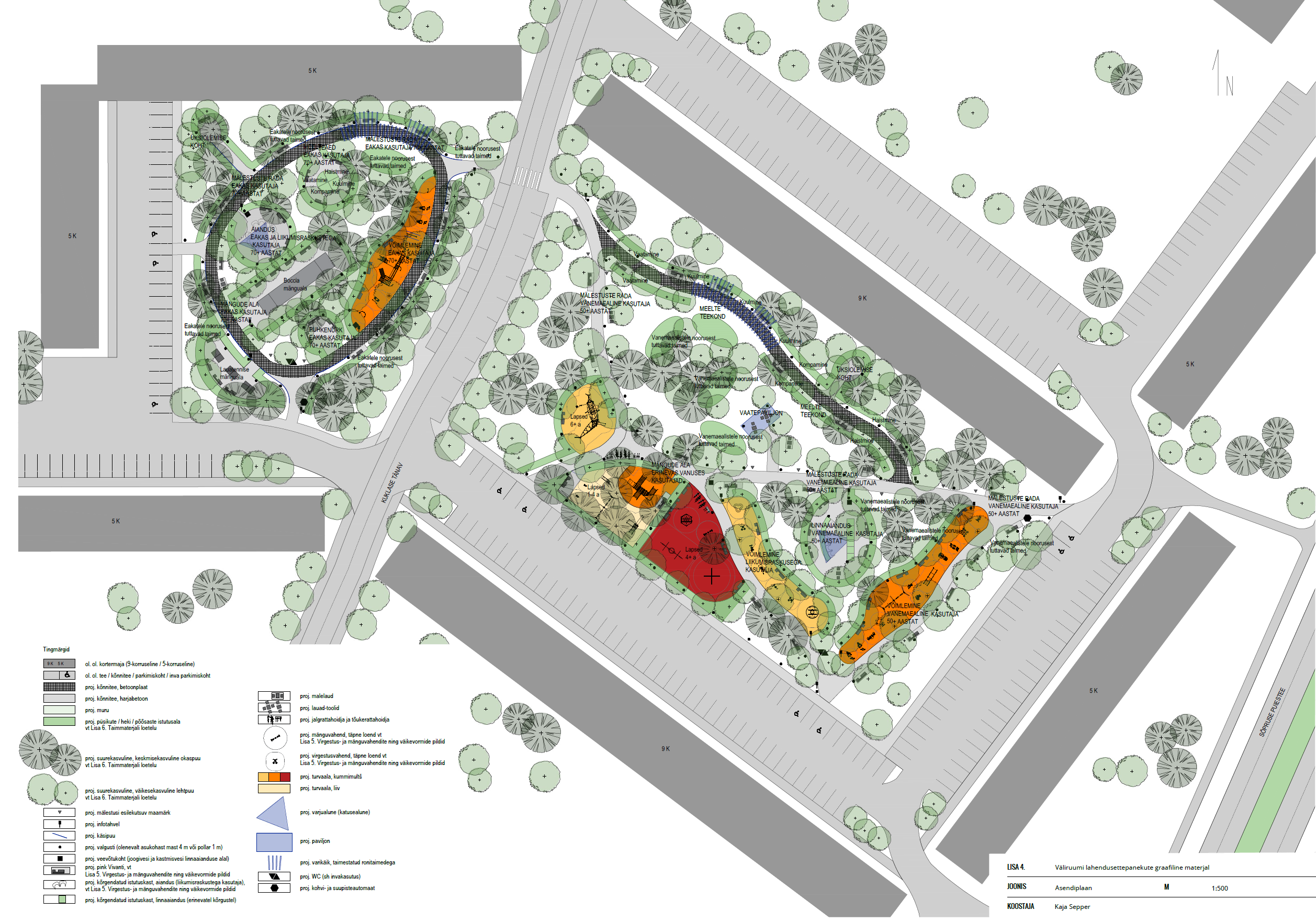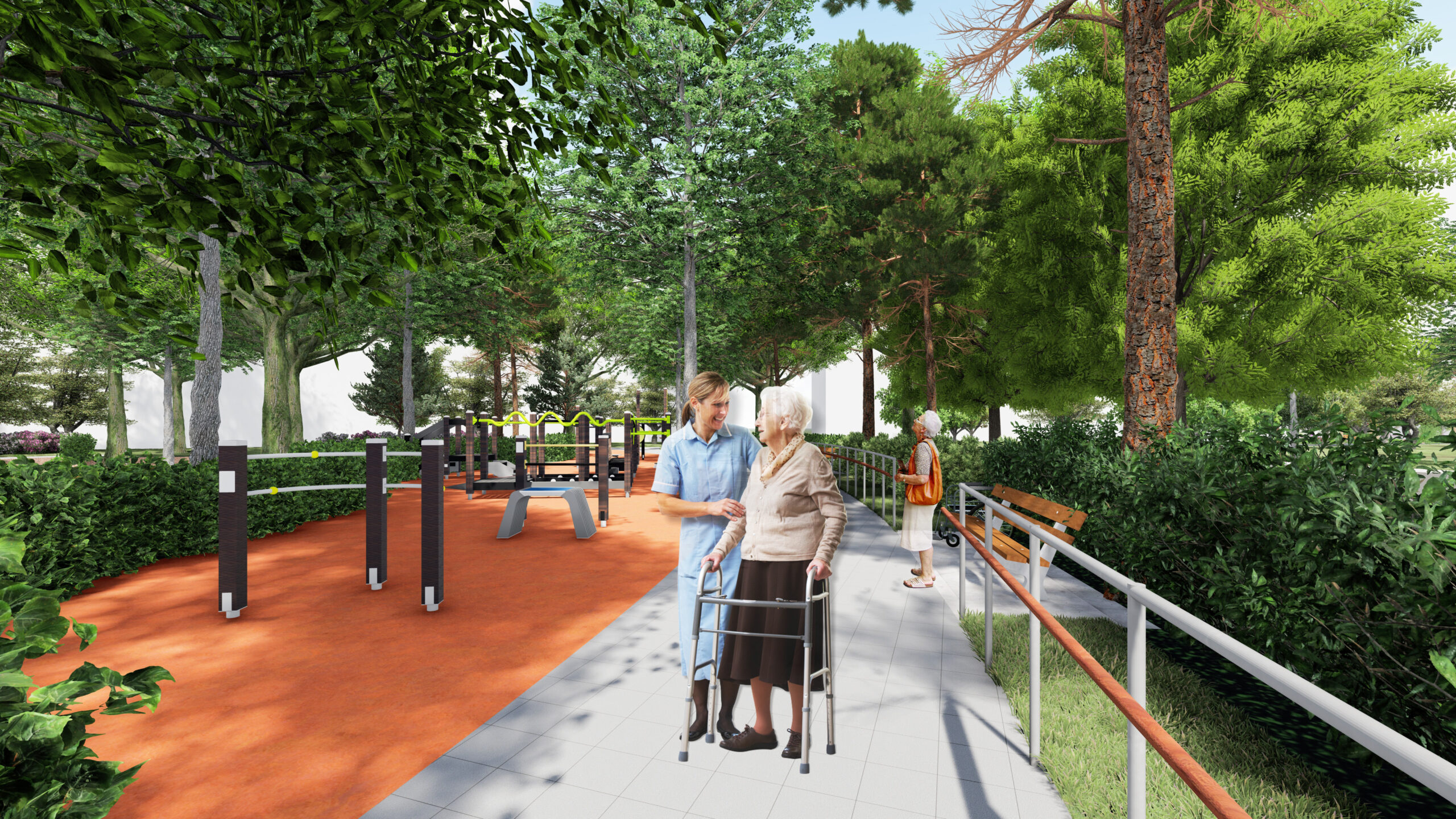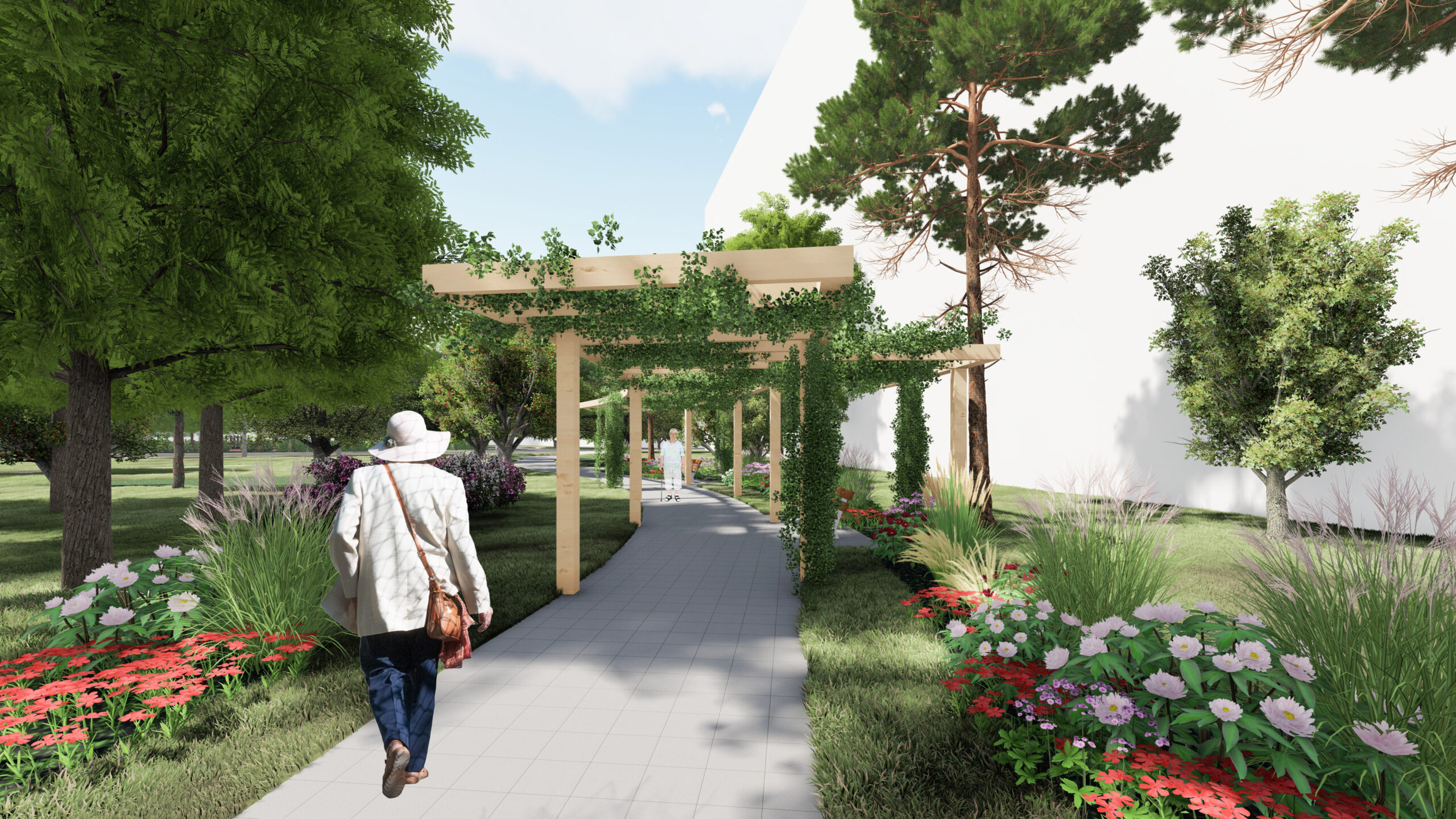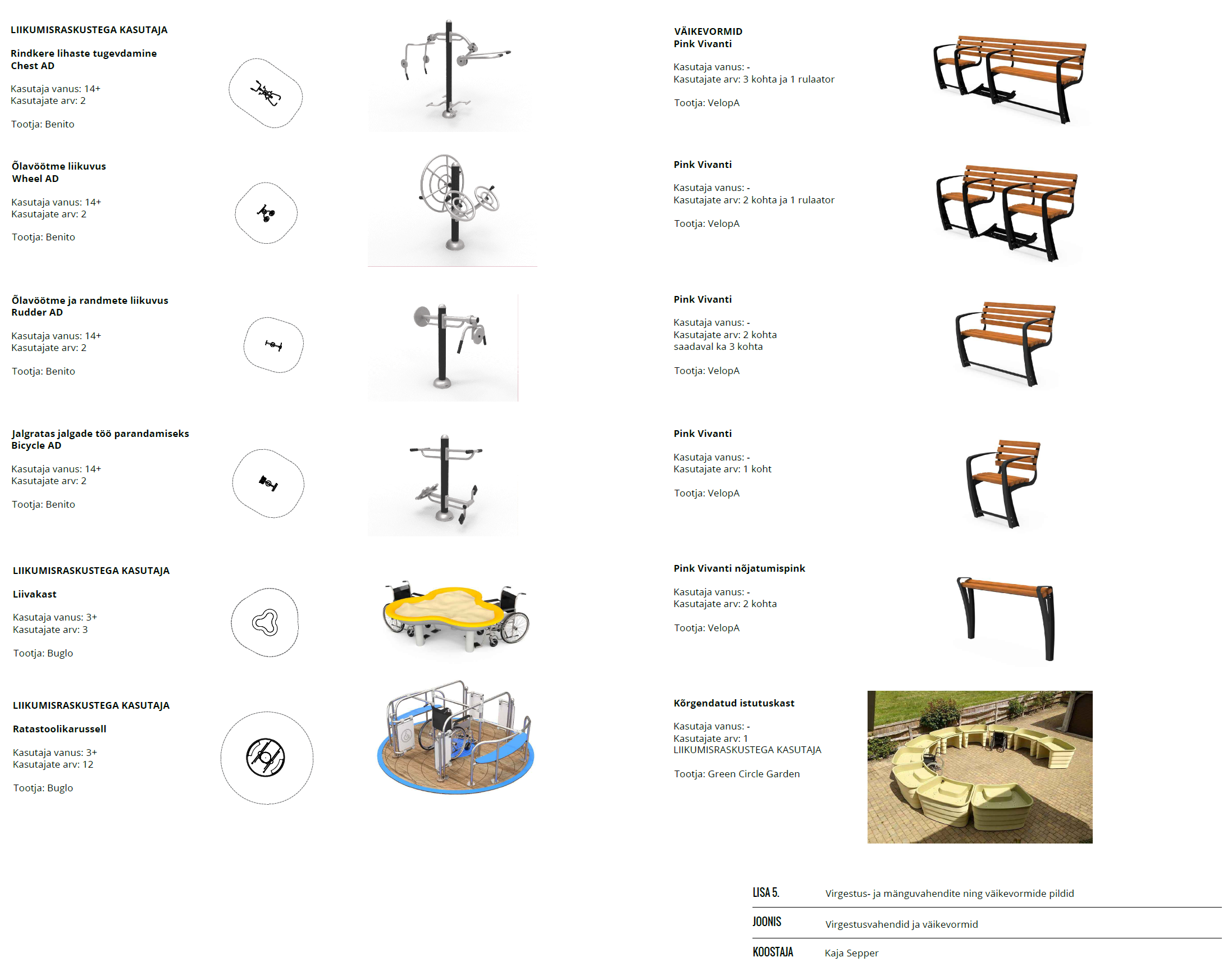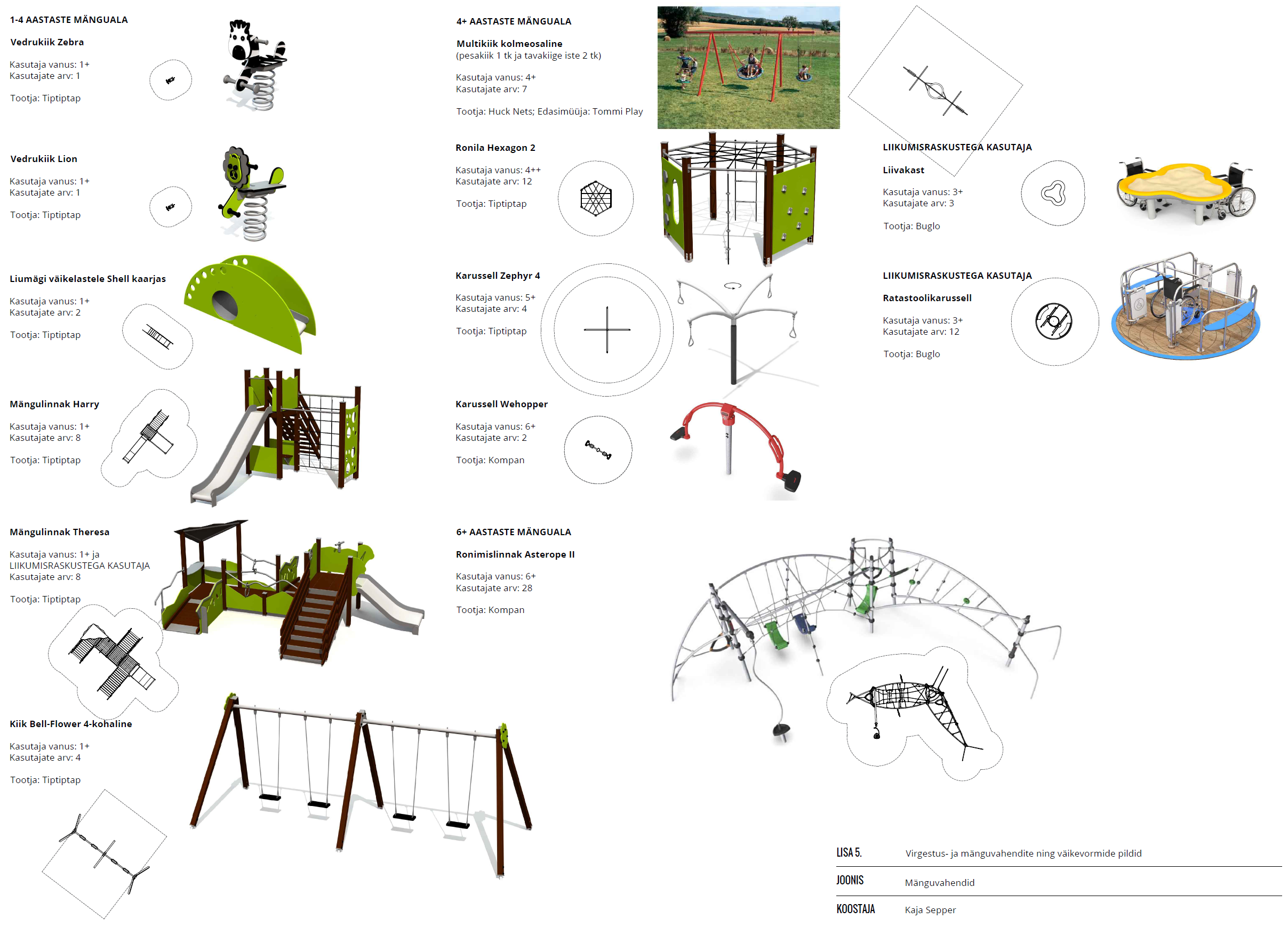Extending the time lived autonomously for seniors by spatial interventions
Year 2022
Suvervisor Kadri Maikov
Special thanks to Sten Vendik for helping with visuals.
Population ageing is taking place worldwide and even more rapidly in Estonia. For the year 2050 the population forecast claims that 34% of Europeans and 16% of the world will consist of people that are aged 65 years and older. For the year 2040 population forecast for Estonia shows that nearly half of the population will be over 50 years old and about 26% over 65 years old. Another important trend in the global society is longer life expectancy. In fact, people live longer but their life throughout their last third of lifespan is often lived in poor health and/or disability. So, Estonia is facing the challenges of increased economic and social demands related to aging population much sooner than in the rest of the world and there is a need to make changes in order to maintain resilience in the society.
There are two development documents in Estonia and two guidance documents but there appears to be no inspiration for any outdoor spatial interventions contained within the proposed development plans or guidelines. An Estonian accessibility networking group started in 2019 addressed a problem of lack of competence in the field at many levels, for example this topic is not prioritized at governmental level and laws do not contain the aspect of accessibility.
Even though 2040 is not far away our society is not ready for the changes ahead of us. It appears ageing is “an issue” of healthcare and social services as the system is not dealing with preventive measures but only with the sequels and outcomes. The main aspects are lifestyle dependent chronical diseases which need medical intervention and loss of mobility/independence/autonomy is often alleviated by needing more social services. It is generally known that prevention is more effective (and often times cheaper) than dealing with the end results. Such as, providing physical and social environments to encourage physical activities, stimulate inclusion and social interactions, enabling well-being in older age. But it is seen in Estonia that prevention is not happening fast enough and not comprehensive enough. Also, there may be lack of political will and competence.
Increasing the wellbeing of older adults (50+ years) and older persons (70+ years) needs an interdisciplinary approach and its subject fields are interconnected to landscape architecture. The aim of this thesis is to demonstrate the contribution landscape architecture can make to proposing age-friendly and inclusive living environment.
The initial task is to find the essence of youthful times and understand the background of older persons and older persons when in their twenties and thirties. The youthful times of older persons were 1960.-1980. and the main characteristics were collective activities initiated by the government and by the employers, also making and repairing things by themselves. For the older adults’ youthful times were 1980.-2000. and the main characteristics were radical general changes in the society and uncertainty and also, making and repairing things by themselves. Then, extend the continuation of traditional patterns into spatial intervention proposal, it is important to strengthen that sense of belonging, re-establish feelings of joy and comfort, providing an area where people feel secure. Time was purposely invested in understanding the needs of the users, because they all need re-assurance that they are part of the community.
The second task is compiling design criteria that could be used as rationale for design concepts not yet listed in the legal framework (and standards) and found only in strategy documents and scientific literature. The criteria were divided into five groups: general spatial requirements, requirements for green space, requirements for functions (activities and zoning), affordances for user, requirements for equipment and elements. When it comes to soft standards (soft values) where the outcome is not as easily quantifiable as it is for hard standards, too often we have a lack of evidence for well-founded spatial proposal for that nature. Soft values in terms of this thesis are attention restauration, stress reduction, wellbeing, sense of belonging, healthier life and others. The list of design criteria provides scientific proof for those soft standards and make it easier to reason the evidence-based design decisions.
Next task is to analyse relevant projects across the world and in Estonia to identify any gaps that may occur. The projects were compared to the design criteria compiled in previous task. Evaluation was carried out and conclusions were made. It appears local projects are very minimalistic in terms of soft values and it could be that the problem is the lack of evidence to provide reasoning for the proposed solutions. The projects from around the world were more comprehensive and contained affordances for attention restauration, stress reduction, wellbeing, sense of belonging and other important soft values.
Ultimately the final task is submitting a proposal for an age-friendly public area within a blockhouse district of Mustamäe (Tallinn) incorporating all research materials gathered earlier. This proposal can be one possible solution and could be seen as set of modules that can be used separately as the circumstances require in either current projects or for the future.
The spatial solution contains inclusive activities for all generations but focuses on older adults and older persons. The age-friendly public area provides many opportunities for promoting physical and mental health, sense of community and belonging, participation and social life, sense of being away and relieving stress, stimulate senses, providing security, provoking memories and establishing a sense of self. The aim is to propose a solution where all the components could work separately but when put together they reinforce one another in synergy.
The results of this thesis can be used by decision makers (local government), property developer, housing cooperatives, (landscape) architects and other designers. They are valuable in understanding the background of the users (older adults and older persons) and help with drawing a rationale for a certain project. Lastly, they could be useful material for the designer in the designing process.
One possible limitation regarding using these kinds of outdoor spaces (if they existed) may be the habit of using this area. Like outlined in the literature review older adults and older persons in other countries have experienced certain sense of out of place, shame and fear regarding using these kinds of areas, some may have experienced discrimination. So, the insecurity and fear have to be dissolved and it could be done by effective communication. It is important to use appropriate media channels used by these age groups. The main message could be for example invitations for using the area presenting timetables for guided activities on the site: guided activities could be light outdoor workouts (for introducing the equipment and possibilities for workouts), introducing the games in the play areas and later on organizing competitions, carrying out gardening workshops, introducing the memory path and therapy garden. The most important outcome of the communication is to normalize the use of this area by older adults and older persons so they could feel free using it and secure when on sight.
In conclusion, more work needs to be done in order to increase the wellbeing of older adults and older persons and amend the capability and resilience of ageing society in Estonia. Further steps must contain interdisciplinary approaches and landscape architecture could contribute by designing age-friendly outdoor space supporting healthy ageing. This Master’s thesis is contributing by researching and creating inclusive and age-friendly living environments.
Full text of this Master’s thesis is available here.
